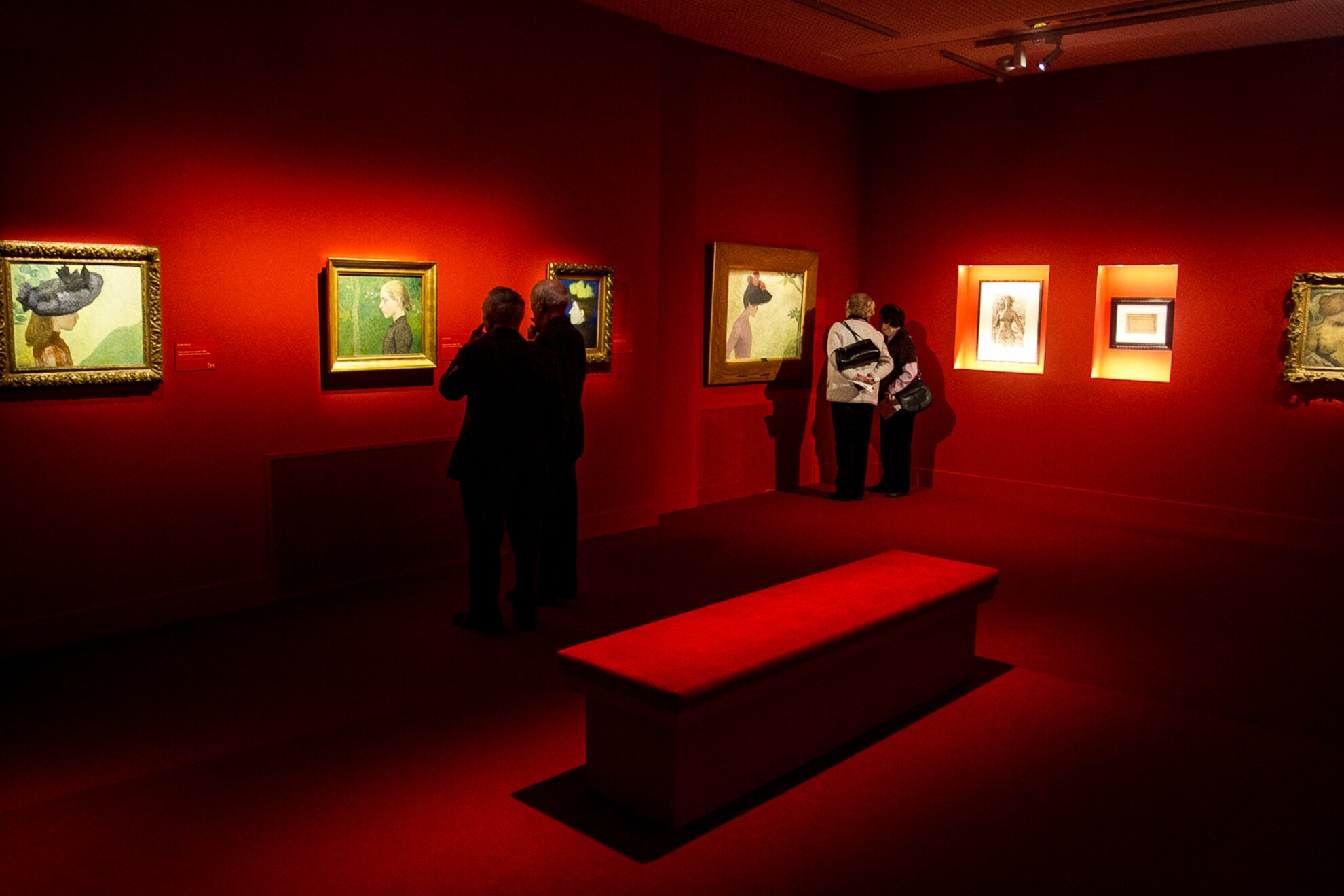József Rippl-Rónai 's journey took him from
Munich to Paris, while Aristide Maillol left his birthplace near the Pyrenees to head to
the French capital. They first met while
studying in about
1890. In Maillol's words: "In the first moment I knew him, I became his friend and he mine; we were so sympathetic to each other at first glance that we went on to meet frequently and never became estranged.”

The traditional timeline here is found at the very end of the exhibition, so when you step into the exhibition space you find yourself facing this quote and a video. This in medias res draws visitors to concentrate on the friendship between the two artists. The exhibition starts with the artworks of path finding, those created during school years, and the parallel placement of the pieces makes the influence they exerted over each other immediately clear. Even those visitors, without formal training in art history will notice this relationship. The few months they spent together at Maillol's birthplace, Banyuls-sur-Mer in Catalonia, inspired both artists, and it placed new colours on Rippl-Rónai's palette.

Although their roads separated around the turn of the century when Rippl-Rónai returned to Hungary, their friendship continued until death. Around this time, Maillol focused on applied arts, primarily carpet design, then wood carving, before becoming one of the most influential European sculptors. Parallel to this, Rippl-Rónai joined symbolist circles and the group of Post-Impressionist avant-garde artists, Les Nabis. Works by the likes of Pierre Bonnard and Édouard Vuillard or their Scottish friend James Pitcairn-Knowles are also included at several points of the exhibition. This provides an often omitted glance at the international painting trends of the period. Of course, the focus remains the works and friendship of the two main artists, which we consider a great plus.

The beautifully designed interior is easy to navigate: the colours of each hall separate the periods under review. The exhibition also includes a few of the 'top works' by Rippl-Rónai, women's portraits like the Woman with Bird-cage and the Woman Dressed in Polka Dots Robe, or My Grandmother, as well as the interiors of the Kaposvár period. These, however, are not the only pros of the exhibition, the parallel placement of the works by the French and the Hungarian artist and their personal anecdotes also contribute to this great cultural experience.




